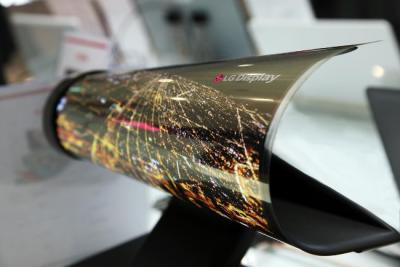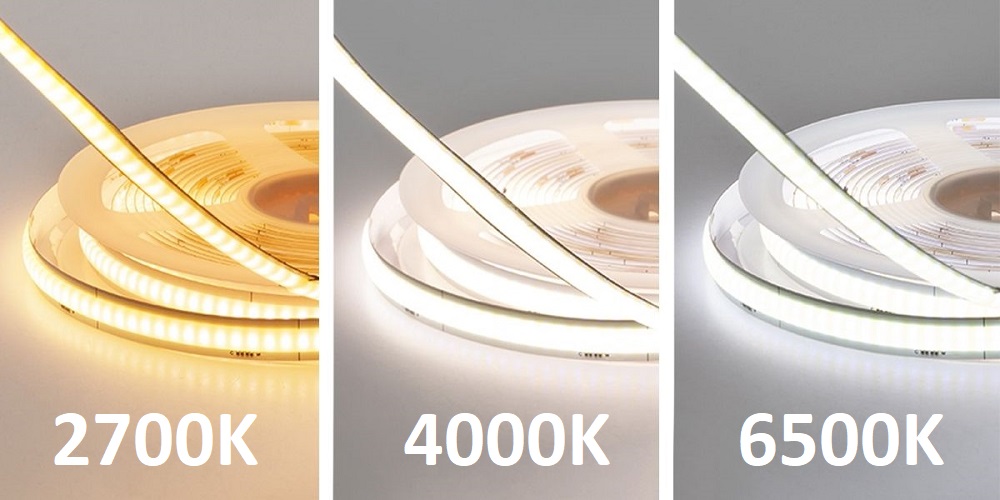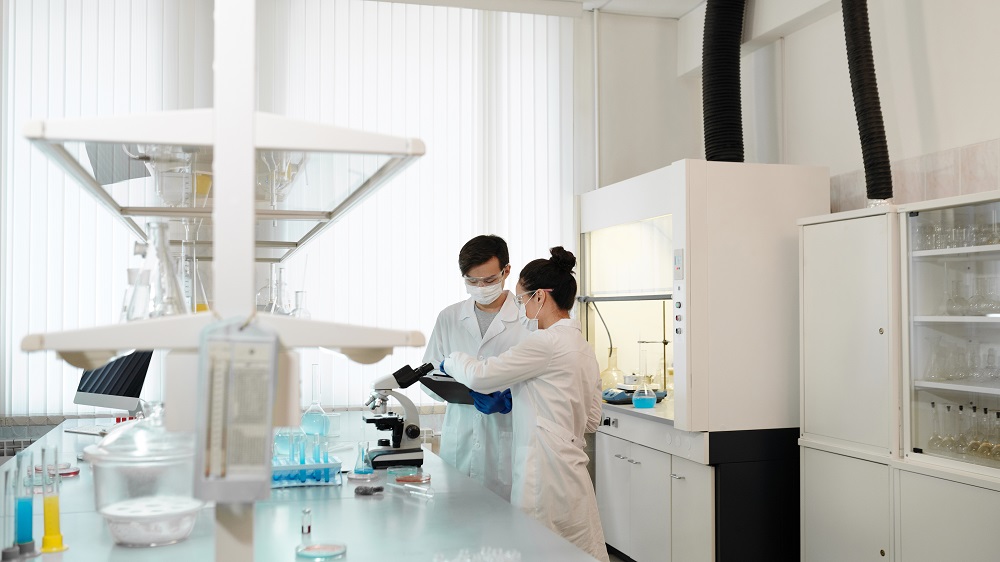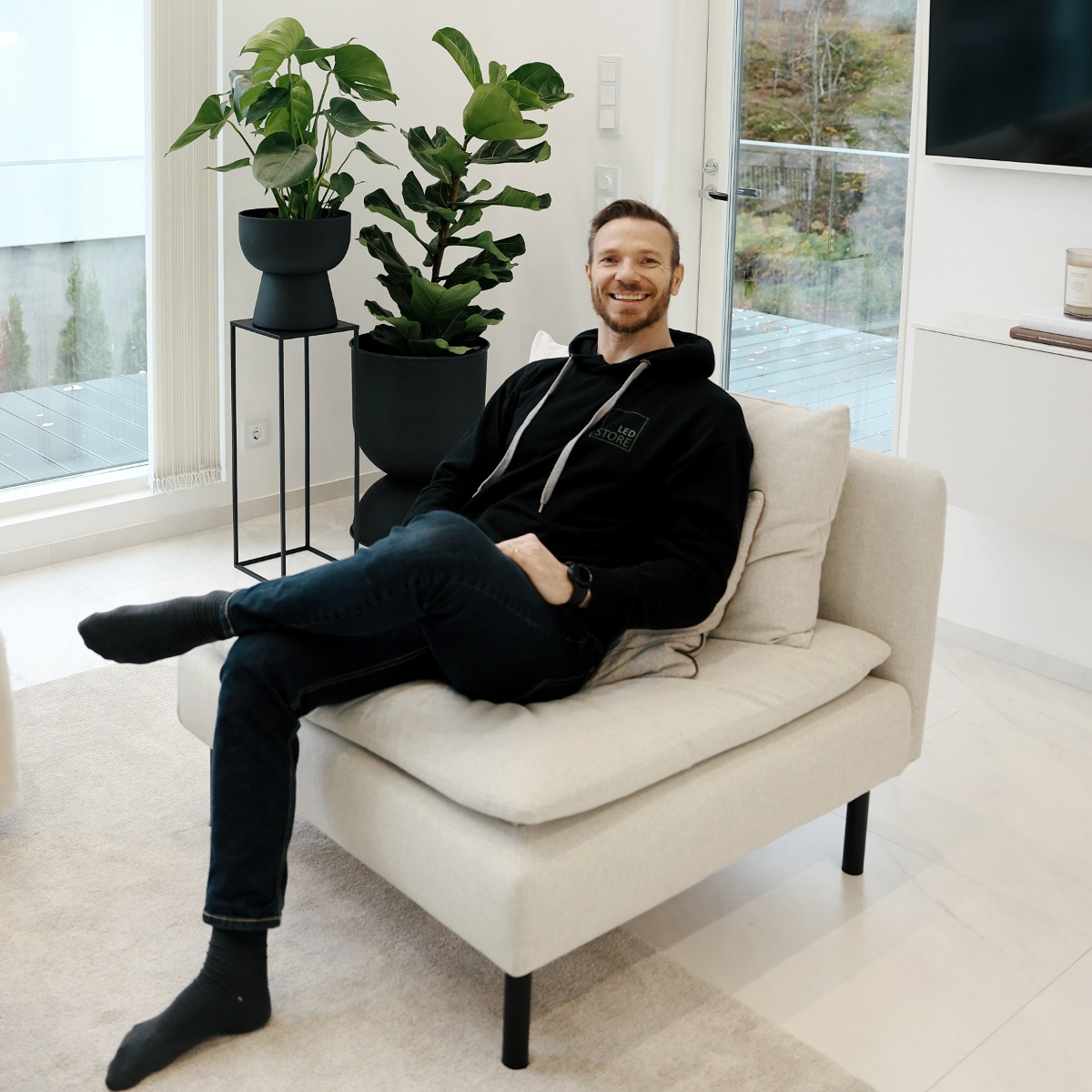Summarize
- LED-valot ovat energiatehokkaita, pitkäikäisiä ja monipuolisia valaistusratkaisuja
- Nanokomposiitit parantavat LED-valojen kirkkautta, tehokkuutta ja kestävyyttä
- OLED-valot tarjoavat ohuita, joustavia ja silmiä miellyttäviä valaistusratkaisuja
- Uudet materiaalit ja teknologiat mahdollistavat innovatiiviset valaistussuunnitteluratkaisut
- LED-valaistus on ympäristöystävällinen ja kierrätettävä vaihtoehto perinteisille lampuille
Lighting technology is a constantly evolving field, and LED lights are an essential part of modern advances in this area. Their energy efficiency, long life and versatility make them an excellent alternative to traditional incandescent and fluorescent lamps.
New materials and solutions in LED lighting not only further enhance these properties, but also open up new possibilities for lighting design and technology. The purpose of this article is to introduce the reader to new innovative materials and solutions used in the production of LED lights to improve their performance and environmental friendliness.
We will focus on the use of organic electronics and the demonstration of cooling and heat management solutions. These advanced technologies will help us meet the growing demand for more efficient, sustainable and aesthetic lighting solutions – now and in the future.
This article is part of a series of articlesentitled ”Future prospects for LED technology”.
Exploiting nanocomposites in LED technology
What on earth is a nanocomposite
Nanocomposites are materials with at least two components, at least one of which is nanosized. In nanocomposites, nano-sized particles, fibres or tubes are combined with another material, such as polymers, metals or ceramics.
Nanocomposites can offer several advantages over traditional materials, such as improved mechanical performance, electrical conductivity, thermal resistance and chemical resistance. In addition, nanocomposites can be modified in many different ways, making them useful in a wide range of applications.
Exploiting nanocomposites
The use of nanocomposites in LED technology has opened up new opportunities in the lighting sector. They allow optimisation of the LED manufacturing process and higher performance with less energy consumption.
Nanocomposites can be used to improve the brightness, efficiency and durability of LED lights. For example, adding nano-sized particles to the light source of an LED light can improve light transmission and prevent light from being reflected back to the light source. This can result in a brighter and more efficient LED light.
Nanocomposites can also be used in materials for LED lights, such as light sources, optical fibres and housing materials, which can improve the durability and reliability of LED lights.
For LED lights, the use of nanocomposites has brought revolutionary improvements in both the manufacturing process and the final product.
Applications of nanocomposites in LED lights are often related to improved energy efficiency, longer lifetime and more durable structures.
As a result, consumers are being offered increasingly efficient and greener lighting options that can save energy while reducing their carbon footprint.
Organic LEDs (OLEDs) and their properties
We have a lot to talk about organic LEDs. They can produce different light sources and be used for different applications. OLEDs can deliver advanced technologies such as high definition and can offer greater savings compared to traditional LED lights.
Organic LEDs (OLEDs)
Organic Light Emitting Diodes (OLEDs) have revolutionised the lighting and display industry, offering great opportunities for a wide range of applications. They can be used to create thin, flexible and energy-efficient light sources that are perfect for home interiors and public spaces alike.
The popularity of OLEDs has skyrocketed in recent years – for example, the brightness, colour rendering and contrast ratio of oled TVs have reached unprecedented levels. This is because OLEDs work without a backlight, making them thinner and lighter than traditional LEDs. They also consume less energy and produce a more pleasant light for the eyes.
It is clear that the properties of organic LEDs open up many new possibilities for the lighting industry and for all of us to improve our everyday lives.

OLED features
Moving on to the light-emitting properties of organic LEDs, it is worth noting the significant advantages they offer over other lighting solutions.
The benefits of OLED lighting cover a wide range of applications and uses – one of the main advantages being its efficiency and flexibility as a light source.
Because OLEDs work without backlighting, they can produce glare-free, even and pleasant light directly from their material.
This makes them not only energy efficient, but also gentler on our eyes than traditional LEDs or fluorescent tubes.
There is no doubt that, properly harnessed, OLED technology can change the way we think about and use light in our everyday lives.
OLED lighting
OLED technology can be used in luminaires. An OLED is a light-emitting panel made of organic (carbon-based) materials that shine light when an electric current is applied to them.
OLED lighting has some advantages over LED lighting, such as:
- OLED lights are flat and glare-free light surfaces, while LED lights are pinpoint light sources that can cause shadows and eye strain.
- OLED lights are extremely thin and lightweight, even thinner than human hair, and can be bent or rolled into different shapes and surfaces.
- OLED lights produce very low heat, averaging less than 35 degrees Celsius, which reduces the risk of cooling and fire.
- OLED lights are energy-efficient and environmentally friendly, as they do not contain mercury or other harmful substances.
OLED lighting is already used in some applications, such as interior lighting, art lighting and automotive. However, the OLED lighting market is still developing and challenging, as OLEDs are expensive and have a shorter lifetime than LEDs.
Improved energy efficiency and sustainability
Imagine if we could light our homes and workspaces efficiently while saving energy! Well, imagine no more – new energy-saving innovations in LED lights make it possible. Improved energy efficiency and sustainability are now a reality thanks to these advanced technologies.
In addition to energy-efficient solutions, modern light management systems help us make the most of the potential of our LED lights. This flexible approach to lighting means we can minimise energy consumption by adjusting the light level to suit different situations.
These eco-friendly innovations not only help reduce our carbon footprint, but also create more pleasant living environments for all of us.
Flexible and thin LED lights
Flexible and thin LED lights offer exciting possibilities for a variety of lighting solutions. They have revolutionised the traditional understanding of how light can be used in interior design and architecture. Applications for flexible LEDs and thin light panels are constantly growing with new innovations. The easiest example of flexible LED light is the LED strip light. Its features include:
- Flexible shape: can be bent into complex shapes
- Slim profile: easy to integrate into structures or furniture
- Lightweight construction: suitable for weaker surfaces
- Low power consumption: an environmentally friendly option
- Easy to install and maintain
These features make flexible and thin LED lights a great solution for both domestic and public spaces. They can be used to create visually striking ensembles or to enhance the atmosphere of a space in an energy-efficient way.

Different colour temperatures can be used to create the desired effects, for example, warm light creates a cosy atmosphere and cool tones emphasise a modern look.
Innovative opportunities for lighting design
As we move from flexible and thin LED lights to our next topic, the possibilities for innovative lighting design will become even more pronounced. Thanks to new materials and solutions, LED lights now offer a wide range of applications for both domestic and professional use.
One of the key features of innovative lighting solutions is intelligent lighting, which enables versatile light control in different situations. This includes things like timers, motion sensors and the use of different colour tones. The table below describes some typical smart lighting features:
| Feature | Description | Example |
|---|---|---|
| Timers | Lights’ switch-on and switch-off times can be set in advance | Bathroom mirror light |
| Motion sensors | Lights turn on automatically when motion is detected | Outdoor lights |
| Adjusting the colour temperature | The colour temperature of the light can be changed to create a mood or improve energy efficiency | Living room ceiling light |
Thanks to these innovative lighting solutions, we can enjoy a more comfortable and energy-efficient living environment. Intelligent lighting and the use of different control options open new doors for designers and users alike, enabling the creation and maintenance of completely new types of spaces.
Eco-friendly and recyclable LED solutions
We need to consider LED recycling, material recycling, eco-friendly products, energy-saving solutions and sustainable lighting solutions to find new, innovative and sustainable solutions. The use of new components, LED lifetime, recyclable products and new technologies will also help us achieve low emission lighting systems, low energy solutions, sustainable light sources, energy efficient lighting solutions, use of recycled materials and sustainable development solutions.
We need to consider LED recycling, material recycling, eco-friendly products, energy saving solutions and sustainable lighting solutions to find new, innovative and sustainable solutions. The use of new components, LED lifetime, recyclable products and new technologies helps us to achieve low emission lighting systems, low energy solutions, sustainable light sources, energy efficient lighting solutions, use of recycled materials and sustainable solutions.
Led recycling
Has it ever occurred to you that LED lights have a life cycle and need to be recycled?
LED recycling is an increasingly important part of the lighting sector’s responsibility, helping to reduce the amount of mixed waste in landfills.
Recycling processes for LEDs have evolved considerably in recent years, allowing better use of the materials they contain. This will allow us to promote the principles of sustainable development and find new ways to use technology more efficiently.
So remember to consider the life cycle of LEDs when buying new lights and invest in quality products – so you can be sure you’re getting the best possible solution not only for yourself, but also for the environment. The LedStore acts as a recycling point for SER.
Recycling of materials
One of the most important things we should pay attention to when it comes to the environmental friendliness of LED lighting solutions is the reuse and recycling of materials.
As we mentioned earlier, advanced recycling processes allow better use of the valuable components contained in LEDs.
In this context, resource efficiency strategies are a key element in the lighting sector, as they help us to use natural resources wisely and minimise wasted materials.
By reusing materials, we can also reduce the need to mine or produce more raw materials – saving energy and reducing our carbon footprint at the same time.
It also creates new jobs and economic opportunities in areas with active recycling communities.
So let’s make the most of the benefits of LED lighting and do our best to protect our planet!
Future prospects for LED light development
Let’s imagine what the future world of LED lights will look like! Ever-evolving technology and new innovations are opening up huge opportunities for LED lighting solutions. This section looks at some of the interesting trends and ideas that could soon be a reality.
Integration of LED lights in various applications
- For building facades
- For vehicle lighting
- For furniture and interior design elements
Intelligent lighting and its applications
- Adjusting the light intensity with your smartphone
- Motion sensors to control the light as needed
- Ambient lighting that reacts to music or the time of day
Environmentally friendly solutions
- Use of more energy-efficient LEDs
- Recyclable materials in lamps and other components
- Solar-powered outdoor lights
As new materials and solutions become available, LED lights have even more potential to improve the world around us. As we evolve, we can expect more efficient, versatile and visually appealing lighting solutions. The future of LED lights looks very promising, and we have a lot to be excited about.
Future materials for LED lighting
LED lighting is constantly undergoing new research and innovation to improve the quality, efficiency and durability of light. Some examples of new semiconductor materials or technologies in LED lighting include.
- Using existing defects in semiconductors such as indium gallium nitride (InGaN) to create light without an external power source. This could open up new applications in energy-efficient lighting and sensors.
- Using metallic nanostructures, such as silver or gold particles, to increase the brightness and colour rendering of LED lights. This can exploit the interaction between light and matter at the nanoscale, which is different from the macroscopic level.
- By developing new phosphor materials or combinations that can modify the colour or spectrum of LED lights. This can provide better white light or multicoloured light for different applications.
Science is constantly evolving and new materials are being explored. Let’s come back to this article in 10 years!
Frequently asked questions
What are the different colour and light output settings for LED lights, and how can they be adjusted?
LED lights can be set in a wide range of colour and luminous intensity settings, allowing for versatile use in both interior lighting and industrial applications.
The impact of colour on mood and space is significant, which is why LED lights are available in a range of colours from warm yellow to cool blue, as well as a variety of other colours in RGB (Red, Green, Blue).
Light output, on the other hand, is the amount of light a bulb produces for a given energy consumption – in this respect, traditional incandescent bulbs lag far behind the energy efficiency offered by LED technology.
The electronic control allows the colour temperature and light intensity of the LEDs to be adjusted, for example by dimming or timing them according to pre-set preferences.
By combining these features, you can create just the right lighting for different applications and purposes.
How do the price and availability of LED lights compare to traditional lighting options such as incandescent and fluorescent?
The price of LED lights has fallen significantly in recent years, making them a more competitive alternative to traditional lighting options.
The energy efficiency and long lifetime of LED lights also means savings in energy costs and fewer lamp replacements in the long term.
Lighting design trends are increasingly favouring LED technology, which allows for more versatile light output and colour settings and smaller and lighter luminaires than solutions based on incandescent or fluorescent lamps, for example.
In terms of availability, LED lights are now very common in the market, making it easy for consumers to find models to suit different situations.
What is the average lifetime of LED lights and how does it affect the total cost of lighting?
The average lifetime of LED lights is significantly longer than that of traditional lighting options such as incandescent and fluorescent lamps. In general, LEDs can last up to 25 000 – 50 000 hours, making them a very durable lighting solution.
In addition, LED lights are significantly more energy efficient than other light sources: they use less energy to produce the same light output, which reduces electricity costs in the long run.
These advantages mean that while the purchase price of LED lamps may be higher compared to other alternatives, their overall cost is often lower in the long run due to lower energy consumption costs and less frequent lamp replacements.
What kind of LED lighting solutions are available for different spaces such as homes, offices, public spaces and industrial sites?
A wide range of LED lighting solutions are available for specific spaces such as homes, offices, public spaces and industrial sites. Such solutions offer a number of advantages, including energy savings and a long service life.
Examples of different LED lighting solutions include atmospheric living room lights, efficient task lights for offices and safe outdoor lighting for public spaces and industrial areas. In some cases, LED therapy can also be used to improve people’s well-being, for example in hospitals or care homes.
Thus, a wide range of LED lighting technologies allows to meet individual needs for lighting different objects while saving energy and reducing overall costs.
What are the most common problems or challenges you may encounter when implementing and using LED lighting, and how can they be prevented or solved?
Some of the most common problems or challenges that may be encountered during the implementation and use of LED lighting include LED malfunctions, lack of energy efficiency, installation and compatibility issues.
Interference can manifest itself as flashing lights or radio frequency interference, for example, but can be prevented by choosing quality products and ensuring proper installation.
Energy efficiency can be improved by purchasing lamps with a higher energy rating and by using different control solutions such as timers and motion sensors.
Installation and compatibility problems can be solved by checking the technical specifications of the equipment before purchase and, if necessary, leaving it to experts to compare the options and make a final decision.
Conclusion
We have seen that LED lighting has many advantages over traditional lighting options. They have a longer lifetime, better energy efficiency and excellent light quality. They can also be easily adjusted to our needs.
However, it is important to take into account the potential challenges and problems of using LED lights. By choosing the right products and solutions, we can ensure that we get the most out of new materials and more sustainable lighting solutions.
If you found this article interesting, you might also like the other parts of the series:
The role of led technology in sustainable development
Led lighting innovations and new applications
Led lighting expert
LedStore has been an expert in led lighting since 2010. We have our own product design, so our products are technologically state-of-the-art.
We focus on light colour temperature controlled and high colour rendering index lights. We do around 500 lighting designs in a year.
We offer a service of custom-made led strips, i.e. made-to-order, easy to install led strips in profiles for everyone. Also installed.
Remember that we are always ready to offer our help to you along the way, by email (myynti@ledstore.fi) and by phone (045 251 4510). As always, feel free to share photos of your own projects on social media at ledstore.fi at Instagram and ledstore.fi at Meta. We love to see the cool things done by our LEDs, and it also helps to provide inspiration for those who are not sure about the power and awesomeness of LEDs. Did you know that we already have over 3500 pictures of our LED installations in our Gallery!
Gallery of Led lights:
Product gallery: Pictures of products in different installation locations
Indirect light: Indirect light in different spaces
Room-specific: Light in different rooms
References: Complete houses that have been photographed


